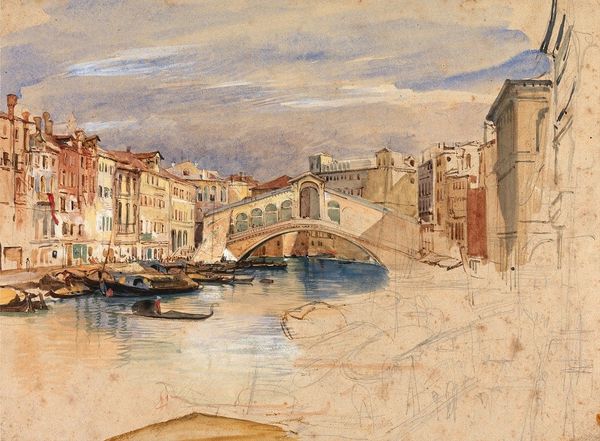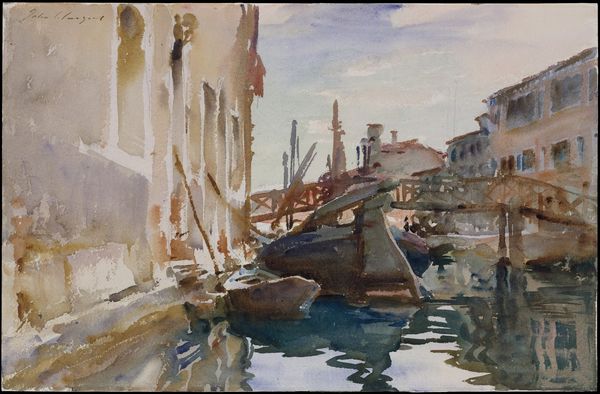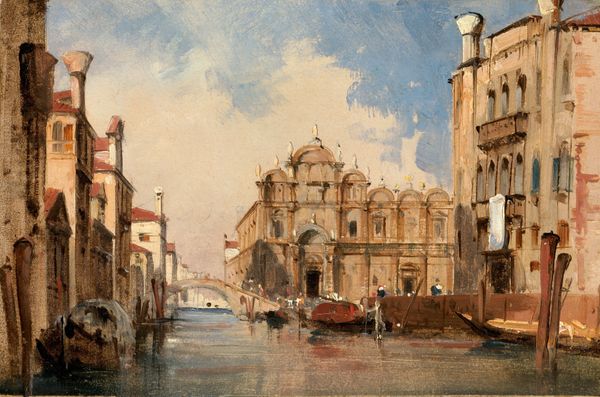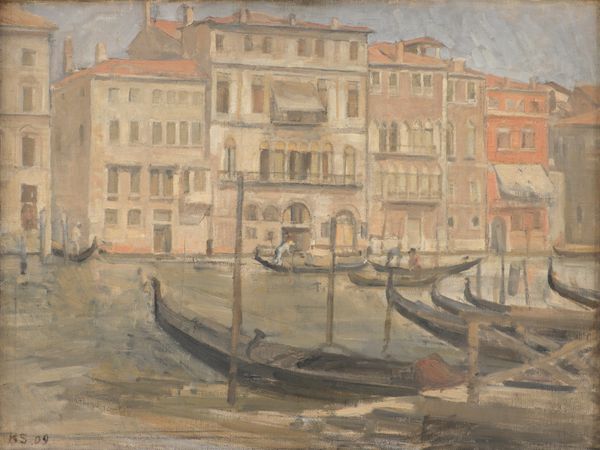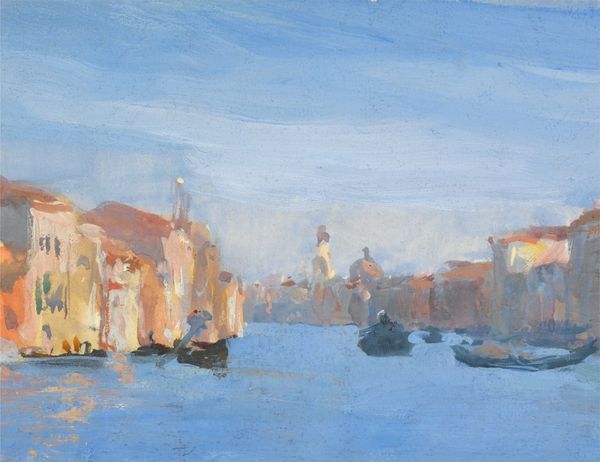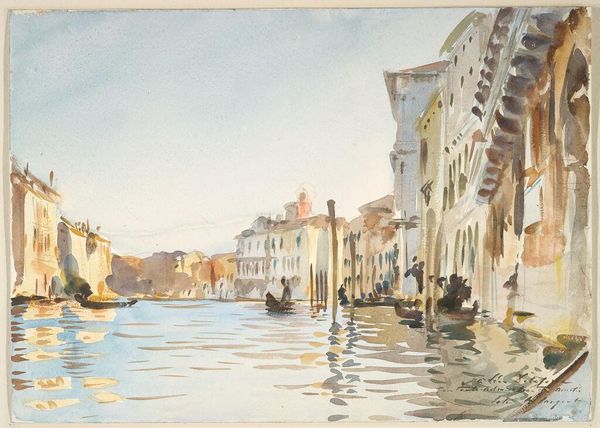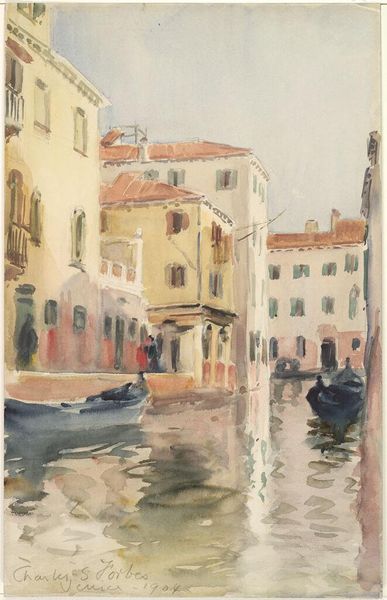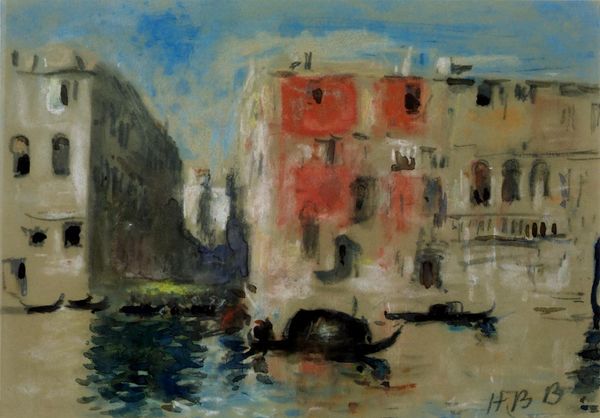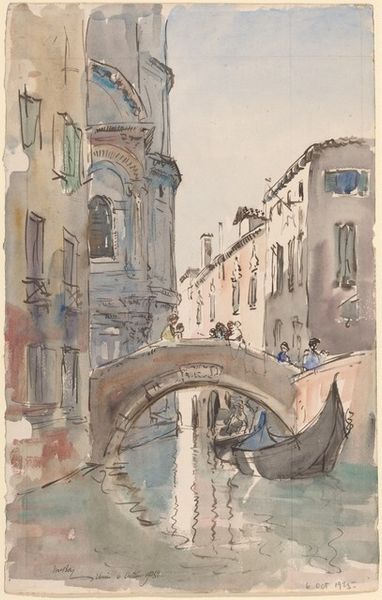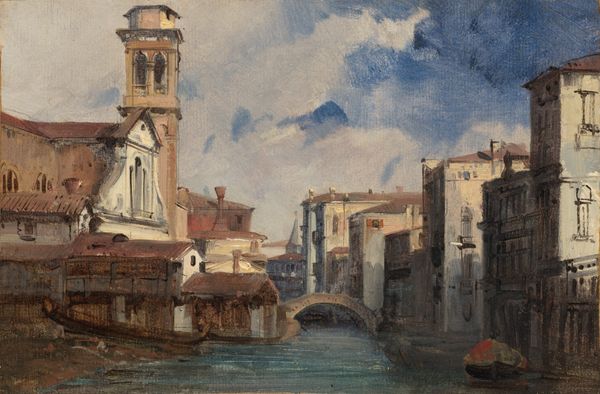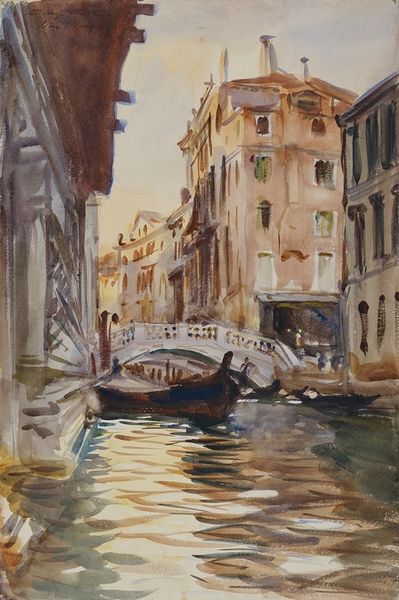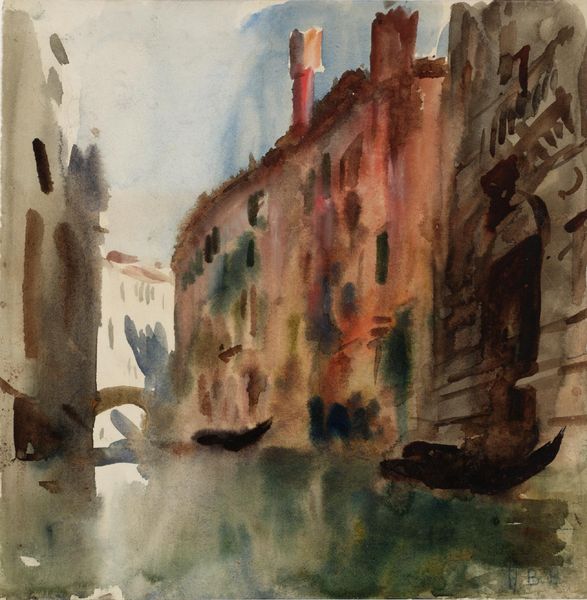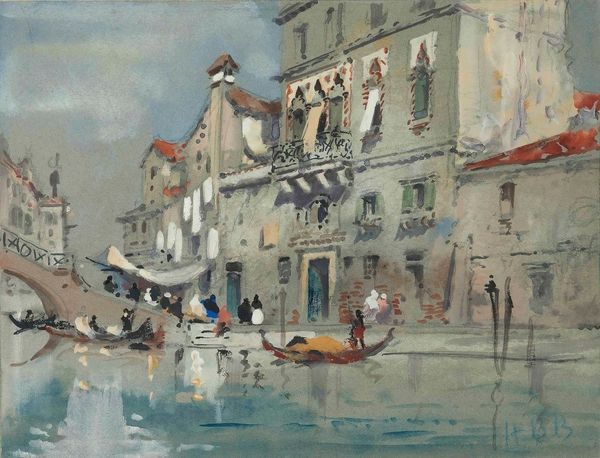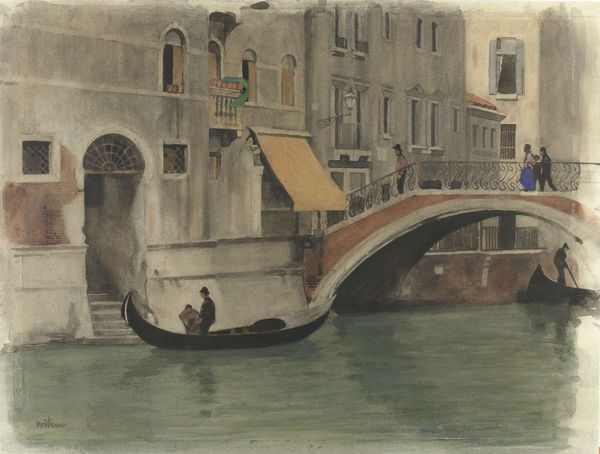
Dimensions: 9 1/16 x 10 in. (23.02 x 25.4 cm) (sheet)
Copyright: Public Domain
Editor: This is "Grand Canal" by Hercules Brabazon Brabazon, from the 19th century. It looks like it's done with watercolors and maybe some charcoal? I am struck by how blurry it is. It feels like a memory. What do you see in this piece? Curator: What strikes me is Brabazon's commitment to capturing Venice through the lens of its material realities. He's not just painting a pretty picture; he’s exploring the relationship between the city, its structures, and the means of representing it. Notice the washes of watercolor; how do they mimic the city's impermanence? Editor: That’s interesting! It does feel transient. So, you're saying the materials themselves are communicating something about Venice? Curator: Precisely! The hazy quality isn't just Impressionistic style, but also an echo of Venice's own vulnerability – the buildings slowly succumbing to the water. The rapid strokes speak to the fleeting nature of experience within the city's changing economic and political landscape. It makes me think, who had access to these materials, and what stories do their origins tell? Editor: That’s a side I hadn’t considered. I was focused on the image, not necessarily the labor and resources behind it. Is he also maybe questioning what art materials are valid? Watercolor wasn't always considered serious, right? Curator: Exactly. Brabazon elevates a medium often deemed “lesser,” blurring the lines between high art and craft, and questioning those power structures. It forces us to think about who dictates taste and value within the art market and society as a whole. Editor: I see what you mean! It all comes back to materials and who controls them. That completely changes my perception of the artwork. Curator: Glad to share that perspective! Analyzing art through a material lens reveals hidden layers of meaning and power dynamics, something always worth remembering.
Comments
minneapolisinstituteofart almost 2 years ago
⋮
Despite pressure from his father, Hercules Brabazon Sharpe followed his passion for art and the warmth of the Mediterranean. He escaped daddy’s thumb in 1847, when an inheritance gave him financial independence along with the requirement that he assume his mother’s family name, hence Hercules Brabazon Brabazon. Brabazon devoted himself to watercolor. Largely self-taught, he studied the Old Masters and the work of his older contemporaries, especially J.M.W. Turner, whose work appears in this room. Considering himself an amateur, he refrained from exhibiting or selling his work until his 70th year when friends finally persuaded him to do so. Perhaps Mia bought too soon, for two years after our 1924 purchase, financial reversals caused his family to flood the market with 3,199 Brabazon watercolors.
Join the conversation
Join millions of artists and users on Artera today and experience the ultimate creative platform.
